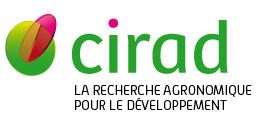Comparative analysis of protein profiles of two citrus genotypes infested by Diaphorina citri
Oliveira T.M., Aguiar A.S., Guedes M.S., Castro N.M.G., Pereira F., Filho M.A.C., Gesteira A.S., Fancelli M., Micheli F.. 2016. In : Mattos Dirceu (ed.), Fermino Carlos Eduardo (ed.), Moreira Novelli Valdenice (ed.), Alves de Azevedo Fernando (ed.), Della Coletta Filho Helvûˋcio (ed.), Vicente Contador Zaccheo Paulo (ed.). Abstract book Sustainable citriculture: the role of applied knowledge. Londrina : IAPAR, p. 87-88. International Citrus Congress, 2016-09-18/2016-09-23, Foz do IguaûÏu (Brûˋsil).
The psyllid Diaphorina citri Kuwayama (Hemiptera: Liviidae) is an important pest of citrus, it is the vector of bacteria causing the huanglongbing (HLB), one of the most severe diseases affecting the global citrus industry. In ordre to control infestation of plants by D. citri and propagation of the bacteria after infestation, it is important to know the molecular response of the host in response to such ingestation. In this work, a comparative analysis of protein profiles was carried from leaf tissue of two citrus genotypes present in the Active Germplasm Bank of Embrapa Cassava and Tropical Fruits (Cruz das Almas - BA), by two-dimensional electrophoresis. The protein profiles were obtained in Sunki Maravilha (Citrus sunki hort. ex. Tanaka) and Valencia (Citrus sinensis) infested and not infested by D. citri. A total of 543 spots were detected in Valencia. Among them, 139 spots were common to both treatments, 191 spots were exclusive of infestation treatment with the psyllid and 223 spots were exclusive of the control condition. In Sunki Maravilha, 898 spots were identified, 62 spots were common to treatment, 249 spots were exclusive of the infestation treatment with the psyllid and 337 spots were exclusive of the control. The data revealed protein changes in genotypes in response to infestation by D. citri. Proteins whose abundance has changed or proteins exclusive of each infestation treatment wwill be identified by mass spectrometry and could be targets for the development of the pest management methods. (Texte intûˋgral)
Documents associûˋs
Communication de congrû´s
Agents Cirad, auteurs de cette publication :
- Micheli Fabienne — Bios / UMR AGAP
